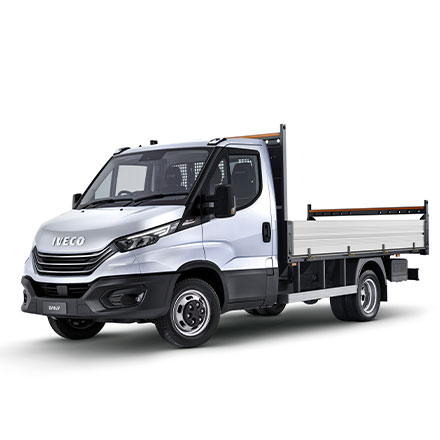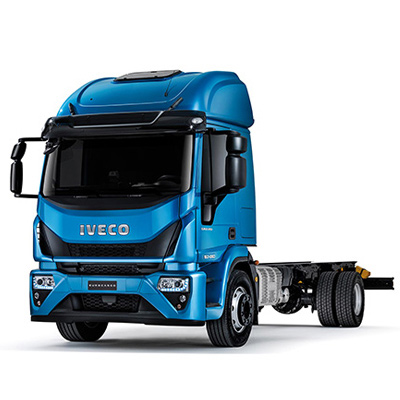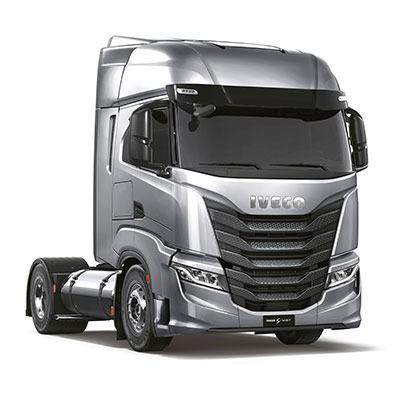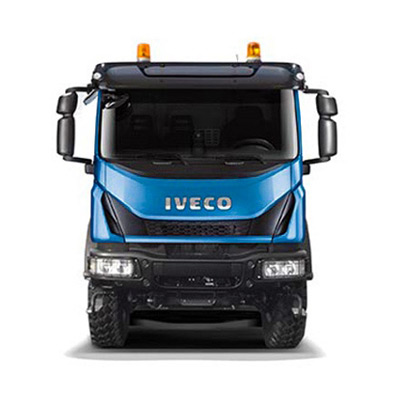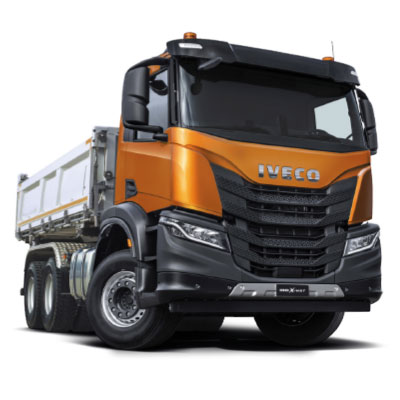Please Wait
On A Cryogenic Cruise
Tuesday 19th November 2019
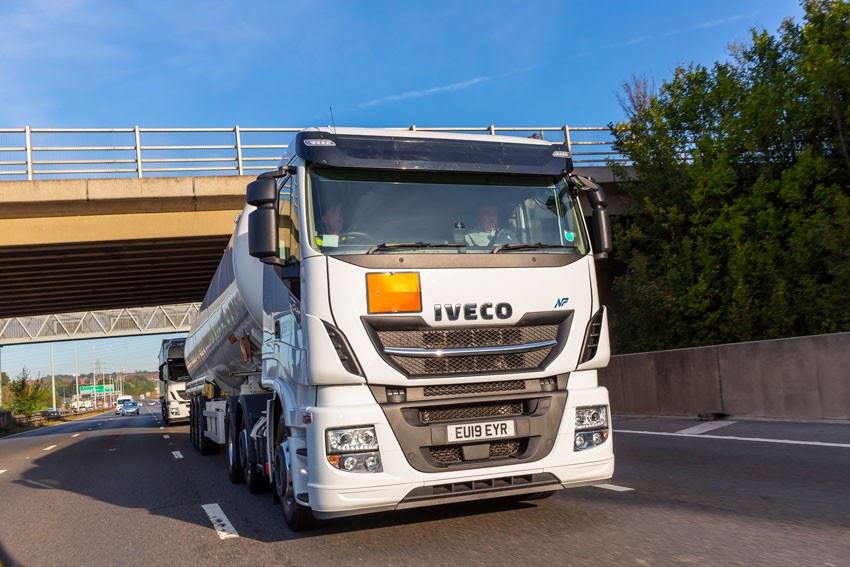
In October 2011 a liquefied natural gas (LNG) road tanker was involved in an accident in Murcia, Spain. After burning for over an hour, the tank exploded. The resulting fireball was 124m high, had a radius of 84m, and threw debris over a distance of 200m.
Fortunately however, crashes involving LNG tankers are incredibly rare – particularly with the UK’s stringent safety stands – which is reassuring to know, considering I’ll be spending most of the day with 18,400kg of this cryogenic behind me. And I’ve been kitted our with a full set of PPE too, comprising anti-static flame-retardant overalls, steel toecap boots, high vis vest and hard hat.
I also get some peace of mind with the knowledge that my chauffeur for the day is Reynolds Logistics driver Mick Earl, who has eight years of experience delivering the fuel.
I meet Earl at Reynolds’ Thurrock, Essex site. It’s a Thursday morning, and the start of his fourth day on the road this week. I’ll be joining him on a drive to the National Grid Grain LNG terminal on the Isle of Grain in Kent, to collect a load, and then shadow him as he discharges it at Gasrec’s DIRFT site.
Earl commenced his driving career with Hardstaff Group 12 years ago, which is when he drove his first gas-powered truck. After four years he was delivering the fuel too, working exclusively for Gasrec. As the contract moved from Hardstaff to Suttons, and then Reynolds, so Earl moved with it. He currently drives a dual-fuel Volvo FM, due for replacement shortly, but today he’s behind the wheel of an IVECO Stralis NP 460 6x2 demo vehicle - one of 35,000 natural gas trucks the truck maker has put onto Europe’s roads so far.
Our journey will also mark the very first time a 100% natural gas fuelled truck has collected a cargo from Grain LNG, for transporting to DIRFT, so it’s a notable occasion.
“It seems to go quite well,” admits Earl, and the truck is certainly not sluggish out of roundabouts on his way to the M25. “But I’ll reserve judgement until it’s fully laden. Early gas conversions were really sluggish, but the truck makers have done their homework now.”
As far as truck driving jobs go, Earl’s is quite an unusual one. He estimates that there are no more than 20 to 30 LNG tanker drivers currently active in the UK, and he has most of their numbers on his phone. “Sometimes it’s good to get advice from other people,” he says. He reassures me that he’s talking about minor operational issues but I’m still pleased to notice that we have a gas detector in the cab – which is standard fitment for this type of work and there to protect the driver.
As we cross over the River Thames on the Queen Elizabeth II Bridge, Earl points out a ferry moored in the dock to our right. He tells me that on occasions he’s had to take that to Zeebrugge to collect a load of LNG. “They put us on a special ventilated deck, and we’re always the last on and the first off,” he says. Liquid natural gas (ADR 1972) has a code B tunnel classification, which is the highest rating. It means most tunnels, including the Dartford Tunnel, are off-limits. So we’ll be going around the M25 clockwise once we’ve loaded.
As we leave the A2 and head towards the Medway Estuary, it becomes clear that Earl knows these roads like the back of his hands. Then that’s no surprise as the Isle of Grain is currently the only place in the UK where trucks can be loaded with LNG (following the closure of Avonmouth and Glenmavis), and on average he’s here four times a week. “Look at them picking spring onions,” he says, pointing to a field on his right. “I remember when they planted those apple trees,” he comments, glancing to an orchard on the left.
The roads are quite narrow on the approach to the terminal, with speed cameras along the way. They have been designed for traffic to the terminal and other local heavy industry, but it doesn’t stop me spotting one particularly obtrusive hedge along the road. But it isn’t a challenge to Earl, who hasn’t taken long to get used to the Stralis.
We are booked in at 10.15am, but we arrive an hour early in order for me to have an induction and safety briefing. Like all visiting drivers, I’m de-matched, which means anything that could potentially cause a spark is removed. I hand over my key fob, mobile phone and watch.
Meanwhile the truck undergoes a safety inspection of its own, with Grain staff checking every axle with a heat gun. The fire extinguishers are inspected, and a static earth check takes place. Safety really is paramount here.
This site is of strategic national importance to UK energy infrastructure, so security is naturally high on the agenda too, and I spot a pair of armed police patrolling the perimeter electric fence. I’ve had to bring photo ID with me to prove who I am.
The only thing the security staff at Grain can’t control is the 1,400 tonnes of explosives sitting on a sandbank a few miles away in the Thames Estuary. They’re on the SS Richard Montgomery, a US ship that sank in 1944 – long before this site was built nearly 40 years ago. I’m assured it poses no safety implications to the terminal whatsoever.
I catch up with the truck just as it’s entering the secure site, but first it has to pass through a pair of thick steel doors. Once inside the site it adheres to the strictly enforced 13mph speed limit. “We chose that speed because it makes you think,” explains ISSOW team leader Damien Cahill, who is my minder for the visit.
Loading a truck with LNG is a skilled process, and it’s also a lengthy one, as I’m about to discover. But before we can start, Earl needs to check in at the bomb-proof road tanker control room.
The 24/7 site is currently used by nine different road tanker customers, including Gasrec, and on average eight trucks are loaded per day. At the moment we are the only ones here, and I’m immediately struck by how tranquil the place is. The 45m high storage tanks that tower above us (and are each big enough to house the Royal Albert Hall) are eerily quiet.
Judging by the information signs, which inform me what wildlife I’m likely to see on site, I suspect animals outnumber humans. “I’ve seen grass snakes and adders,” says Cahill, “and we even have a family of water voles.” The site certainly takes its environmental responsibilities seriously.
We are ready to commence loading now, and Earl drives the Stralis onto one of two loading bays. The terminal has planning permission for a further two, should an increase in demand dictate it.
Throughout the loading process, Earl is assisted by a member of Grain staff. The two men work closely together, checking and double-checking every step of the way. They are also assisted by a pre-recorded voice, advising them when it is safe to progress to the next stage. One pump has a male voice, and the other a female, so as to avoid any possible confusion. There are cameras, and smoke and fire detection equipment everywhere.
Three metal hoses, varying in size, are attached to the rear of the M1 Engineering tri-axle tanker. The narrowest carries nitrogen, which is used to purge the pipes at the start and end of the operation. This takes five minutes to complete. Next in diameter is the vapour line, which is used to depressurise the tanker. It takes 10 minutes to pump out the excess gas, and our weight is reduced from 25,140kg to 25,000kg. Finally it’s time for loading to commence.
LNG has a temperature of -162C, which is clearly rather cold. So as not to put too much stress on the tanker, it’s vital that it is cooled down gradually. With this in mind, for the first five minutes, the liquid methane is released at a rate of 5cu m per hour. Then, when the tanker reaches the desired temperature, the rate is increased to 80cu m per hour. The hose is completely white now. I can see why protective clothing is vital.
While loading takes place, Earl heads to the control room for his 45 minute break. National Grid Grain LNG has one of the most expensive driver toilet facilities in the UK. It’s not that it’s overly lavish, in fact it doesn’t even have a shower. It’s just that it’s built to the same impressive safety standards as the control room. When I ask why there isn’t a shower, I’m reminded that towels aren’t approved PPE!
The actual loading process takes 80 minutes, and then, with paperwork complete and bill of lading stored safely in the cab, we’re off.
As we leave the site I immediately notice that Earl has adopted a different driving style. He explains that LNG is twice the size of water, and half the density, so consequently the centre of gravity is two-thirds of the way up the tanker. “The high centre of gravity could easily catch someone out,” he explains. It is however heavily baffled, so there’s none of the surging you get with some other tankers.
Earl is based in DIRFT, and that’s where he plans to finish his working week tomorrow afternoon. With that in mind he takes the opportunity to book his next visit to Grain at 7am the following morning. “That should get me home for early afternoon,” says Earl, who is salaried, and dictates his own working hours. In a typical working week he makes deliveries to Gasrec’s DIRFT filling station, and to its customers sites in Bristol (Sainsbury’s), Swindon (B&Q), and Tamworth (UPS).
Suddenly an Audi cuts in front of us as it makes a last minute exit from the motorway. I wonder if he’d have still done that if he’d known what the black and orange 1972 board on the trailer signified.
“Car drivers never cease to amaze me,” says the unflustered Earl, who thinks they would all benefit from some basic ADR training.
Our clockwise passage around the M25 to the M1 will add at least 45 minutes to our journey. But Earl is used to it. Sometimes he has to travel clockwise from Grain to Thurrock, a three-hour-plus journey that would only take an hour were he allowed to use the Dartford Tunnel. He then lists numerous tunnels that he’s forbidden from traversing, which curiously doesn’t include the 1,200m long Hatfield Tunnel on the A1M.
“It pulls better than my Volvo,” says Earl, glancing at the speedometer as we climb towards Reigate at junction 8. We’re doing 35kph. He tells me he likes to get up hills as quickly as possible from fear of being rear-ended – and he’s clearly appreciating the performance from the 12.9-litre Cursor 13 engine, matched with Iveco’s 12-speed Hi-Tronic transmission.
Junction 10 of the M25 to the M1 can take close to three hours, but today the traffic is running freely, and we get a clear run. The only slight hold-up is caused by a broken down NR Evans truck, and the subsequent lane closure. Earl informs me that if he were to break down, instead of closing one lane, the police would most likely leave one lane open.
The M1 is stickier, and almost immediately we see a red cross over the outside lane. But it’s apparently invisible to the hundreds of cars that pass beneath it. Why aren’t these drivers fined immediately?
Eventually we slow to a walking pace, and both Earl and I look down to see car drivers sending “I’m going to be late home” texts. “I see it all the time,” says the exasperated Earl, “especially in slow moving bumper-to-bumper traffic, when they need to be concentrating.”
At the front of the queue is a crash, fortunately minor. But it’s been enough to hold us up for 20 minutes. As we pass a parked police car, it suddenly occurs to me that in the wrong hands – like any of the thousands of tankers on our roads carrying fuels or chemicals – his load could potentially be a lethal weapon. With that he shows me a laminated sign which he carries with him. It’s to show to the police, notifying them that he is carrying a high consequence load, and that he won’t pull over if he suspects that they aren’t bona fide. “Obviously I can’t use it willy-nilly, or if I’m in a rush to get home for my tea, but if it’s an unmarked police car with a blue light I won’t take a chance,” he explains. Should this scenario ever unfold, Earl would show the sign, and phone the police to verify the vehicle’s number plate before pulling over.
Earl is very much his own boss when he’s out on the road. He sets his collection times, and has a good idea of where he’ll be every night. He sleeps in the cab four nights a week, almost always in truckstops or MSAs. He’s only allowed to use a lay-by if there is a reservation separating it from the road.
By his own confession, Earl is “fascinated by LNG”, which explains why he’s been involved with it for so long. As we drive up the M1 towards DIRFT, he tells me he’s watched the industry grow from its infancy, and is delighted to see the recent spurt in demand caused by more OEM-built products. “I have always had faith that it would grow, and reckon the VW scandal really made people sit up and take notice of it,” he says.
But he is well aware that as demand for LNG grows, so his workload will increase. He’s also likely to be called upon to train additional drivers as Gasrec grows in line with demand for the fuel.
These are sentiments echoed by James Wescott, chief commercial officer at Gasrec, who is waiting for us at the UK’s largest LNG filling station. “Last year we were filling 20 trucks a day at this site, whereas this year we are up to 100 fills,” he tells us. “By this time next year we are anticipating 300 per day.” To cope with this he anticipates having to acquire another couple of trailers, which at £250,000 a hit, represent a significant investment.
As we talk, Earl commences unloading. He opens the control panel at the side of the trailer, to reveal numerous wheels, levers and pulleys, which wouldn’t look out of place on the set of Crystal Maze. He methodically works on them, turning wheels, connecting hoses and releasing levers. Before he can commence unloading, first he needs to cool the tanker’s pump down to -130C, so as not to put too much stress on it. He is slowly engulfed in a cloud of what looks like dry ice.
Like loading, unloading is a slow going, but with his expertise, it’s an incredibly safe process. There are so many fail-safes in place, including overfill protection.
Watching him work, dressed in his protective clothing, moving from truck to storage tank, and continually keeping an eye on the pressures, is a reminder that LNG does indeed require a lot of respect. But, it also occurs to me that in the hands of a trained expert like Earl, it’s no more dangerous than any other fossil fuel.
Exclusive feature from Commercial Motor Words: Will Shiers Pictures: Tom Lee


